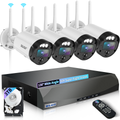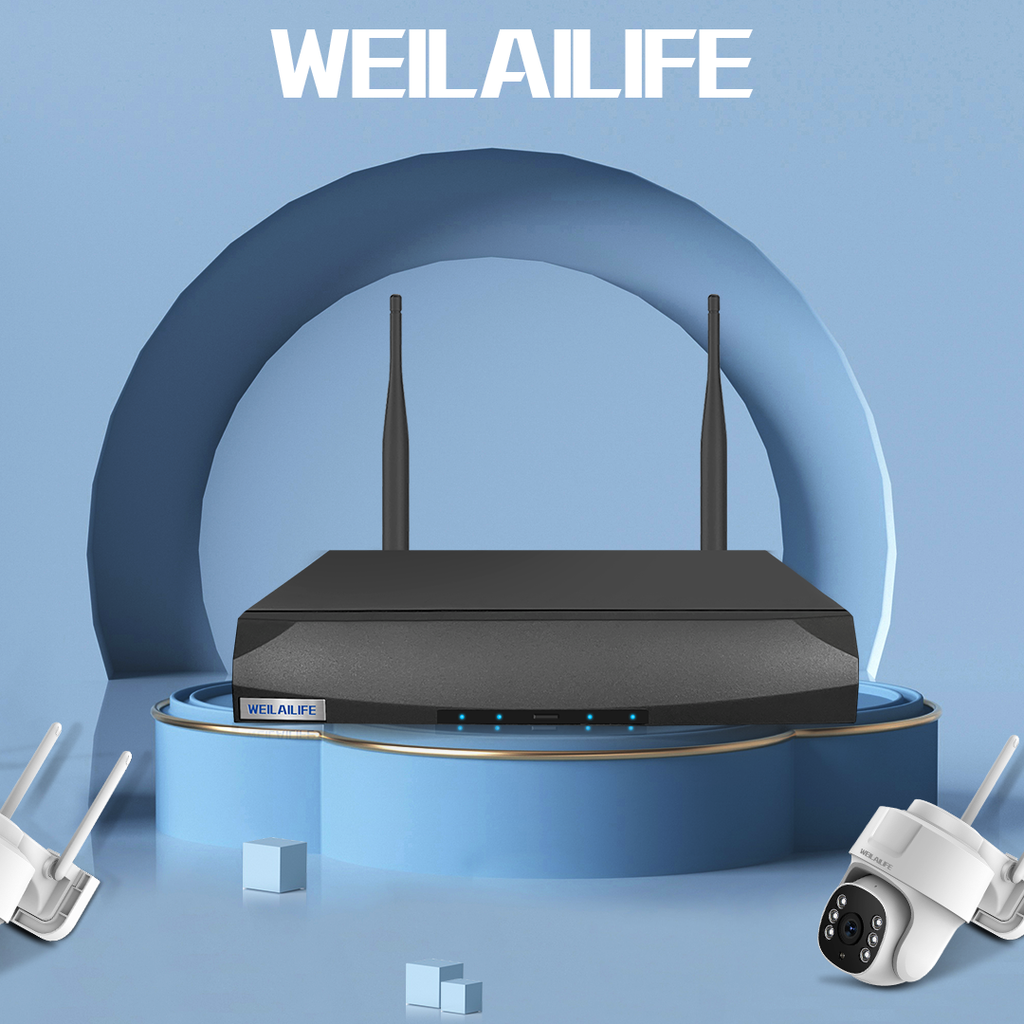Classifications of Surveillance Cameras - A Guide by WEILAILIFE
Introduction:
Surveillance cameras play a crucial role in ensuring security and monitoring activities in various settings. As a leading brand in the surveillance industry, WEILAILIFE is dedicated to providing top-quality and advanced surveillance solutions. In this article, we will explore the different types of surveillance cameras based on key factors such as imaging color, resolution, sensitivity, and CCD target size.
Classification Based on Imaging Color:
a) Color Cameras:
Color cameras are ideal for situations that require detailed identification, such as distinguishing clothing colors or other visual elements. The presence of colors enhances the amount of information captured, making color cameras approximately ten times more informative than black and white cameras.
b) Black and White Cameras:
Black and white cameras are suitable for low-light environments and areas where installing lighting equipment is not feasible. They are often chosen when monitoring specific locations or movements, and their resolution is generally higher than that of color cameras.
Classification Based on Camera Resolution:
a) Low-Resolution Cameras:
These cameras have image pixels around 250,000, color resolution of about 330 lines, and black and white resolution of approximately 400 lines. They are considered entry-level cameras.
b) Medium-Resolution Cameras:
With image pixels ranging from 250,000 to 380,000, medium-resolution cameras offer color resolution of about 420 lines and black and white resolution of around 500 lines.
c) High-Resolution Cameras:
High-resolution cameras have over 380,000 image pixels, providing color resolution equal to or greater than 480 lines and black and white resolution exceeding 600 lines.
Classification Based on Camera Sensitivity:
a) Standard Cameras:
Standard cameras require a light intensity of 1 to 3 LUX to function optimally.
b) Low-Light Cameras:
Low-light cameras operate effectively at light intensities of approximately 0.1 LUX.
c) Starlight Cameras:
Starlight cameras can work under extremely low light conditions, with sensitivity levels below 0.01 LUX.
d) Infrared Illumination Cameras:
These cameras can effectively operate with almost zero light by utilizing infrared light sources for imaging.
Classification Based on CCD Target Size:
a) 1-inch CCD:
With a target size of 12.7mm wide and 9.6mm high, 1-inch CCD cameras offer a diagonal measurement of 16mm.
b) 2/3-inch CCD:
Cameras with 2/3-inch CCD have a target size of 8.8mm wide and 6.6mm high, providing a diagonal measurement of 11mm.
c) 1/2-inch CCD:
The target size of 1/2-inch CCD cameras is 6.4mm wide and 4.8mm high, with a diagonal measurement of 8mm.
d) 1/3-inch CCD:
Cameras with 1/3-inch CCD have a target size of 4.8mm wide and 3.6mm high, offering a diagonal measurement of 6mm.
e) 1/4-inch CCD:
Cameras with 1/4-inch CCD have a target size of 3.2mm wide and 2.4mm high, providing a diagonal measurement of 4mm.
Conclusion:
As a leading brand in the surveillance industry, WEILAILIFE offers a diverse range of surveillance camera systems to suit various needs and preferences. By understanding the different types of surveillance cameras based on imaging color, resolution, sensitivity, and CCD target size, customers can make informed decisions to enhance their security and monitoring requirements. With WEILAILIFE's cutting-edge technology and commitment to excellence, users can trust in the reliability and performance of their surveillance solutions.
Surveillance cameras play a crucial role in ensuring security and monitoring activities in various settings. As a leading brand in the surveillance industry, WEILAILIFE is dedicated to providing top-quality and advanced surveillance solutions. In this article, we will explore the different types of surveillance cameras based on key factors such as imaging color, resolution, sensitivity, and CCD target size.
Classification Based on Imaging Color:
a) Color Cameras:
Color cameras are ideal for situations that require detailed identification, such as distinguishing clothing colors or other visual elements. The presence of colors enhances the amount of information captured, making color cameras approximately ten times more informative than black and white cameras.
b) Black and White Cameras:
Black and white cameras are suitable for low-light environments and areas where installing lighting equipment is not feasible. They are often chosen when monitoring specific locations or movements, and their resolution is generally higher than that of color cameras.
Classification Based on Camera Resolution:
a) Low-Resolution Cameras:
These cameras have image pixels around 250,000, color resolution of about 330 lines, and black and white resolution of approximately 400 lines. They are considered entry-level cameras.
b) Medium-Resolution Cameras:
With image pixels ranging from 250,000 to 380,000, medium-resolution cameras offer color resolution of about 420 lines and black and white resolution of around 500 lines.
c) High-Resolution Cameras:
High-resolution cameras have over 380,000 image pixels, providing color resolution equal to or greater than 480 lines and black and white resolution exceeding 600 lines.
Classification Based on Camera Sensitivity:
a) Standard Cameras:
Standard cameras require a light intensity of 1 to 3 LUX to function optimally.
b) Low-Light Cameras:
Low-light cameras operate effectively at light intensities of approximately 0.1 LUX.
c) Starlight Cameras:
Starlight cameras can work under extremely low light conditions, with sensitivity levels below 0.01 LUX.
d) Infrared Illumination Cameras:
These cameras can effectively operate with almost zero light by utilizing infrared light sources for imaging.
Classification Based on CCD Target Size:
a) 1-inch CCD:
With a target size of 12.7mm wide and 9.6mm high, 1-inch CCD cameras offer a diagonal measurement of 16mm.
b) 2/3-inch CCD:
Cameras with 2/3-inch CCD have a target size of 8.8mm wide and 6.6mm high, providing a diagonal measurement of 11mm.
c) 1/2-inch CCD:
The target size of 1/2-inch CCD cameras is 6.4mm wide and 4.8mm high, with a diagonal measurement of 8mm.
d) 1/3-inch CCD:
Cameras with 1/3-inch CCD have a target size of 4.8mm wide and 3.6mm high, offering a diagonal measurement of 6mm.
e) 1/4-inch CCD:
Cameras with 1/4-inch CCD have a target size of 3.2mm wide and 2.4mm high, providing a diagonal measurement of 4mm.
Conclusion:
As a leading brand in the surveillance industry, WEILAILIFE offers a diverse range of surveillance camera systems to suit various needs and preferences. By understanding the different types of surveillance cameras based on imaging color, resolution, sensitivity, and CCD target size, customers can make informed decisions to enhance their security and monitoring requirements. With WEILAILIFE's cutting-edge technology and commitment to excellence, users can trust in the reliability and performance of their surveillance solutions.









